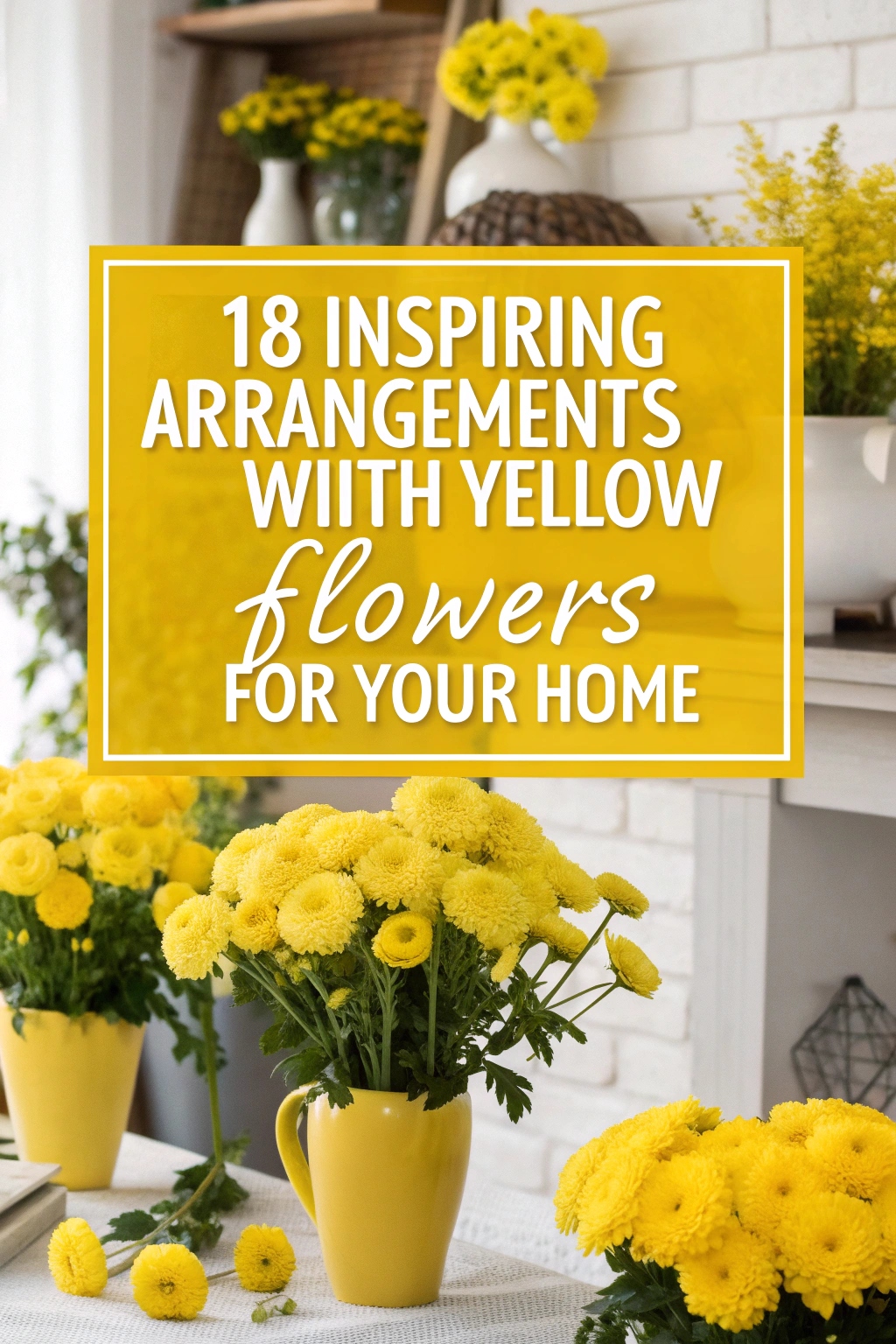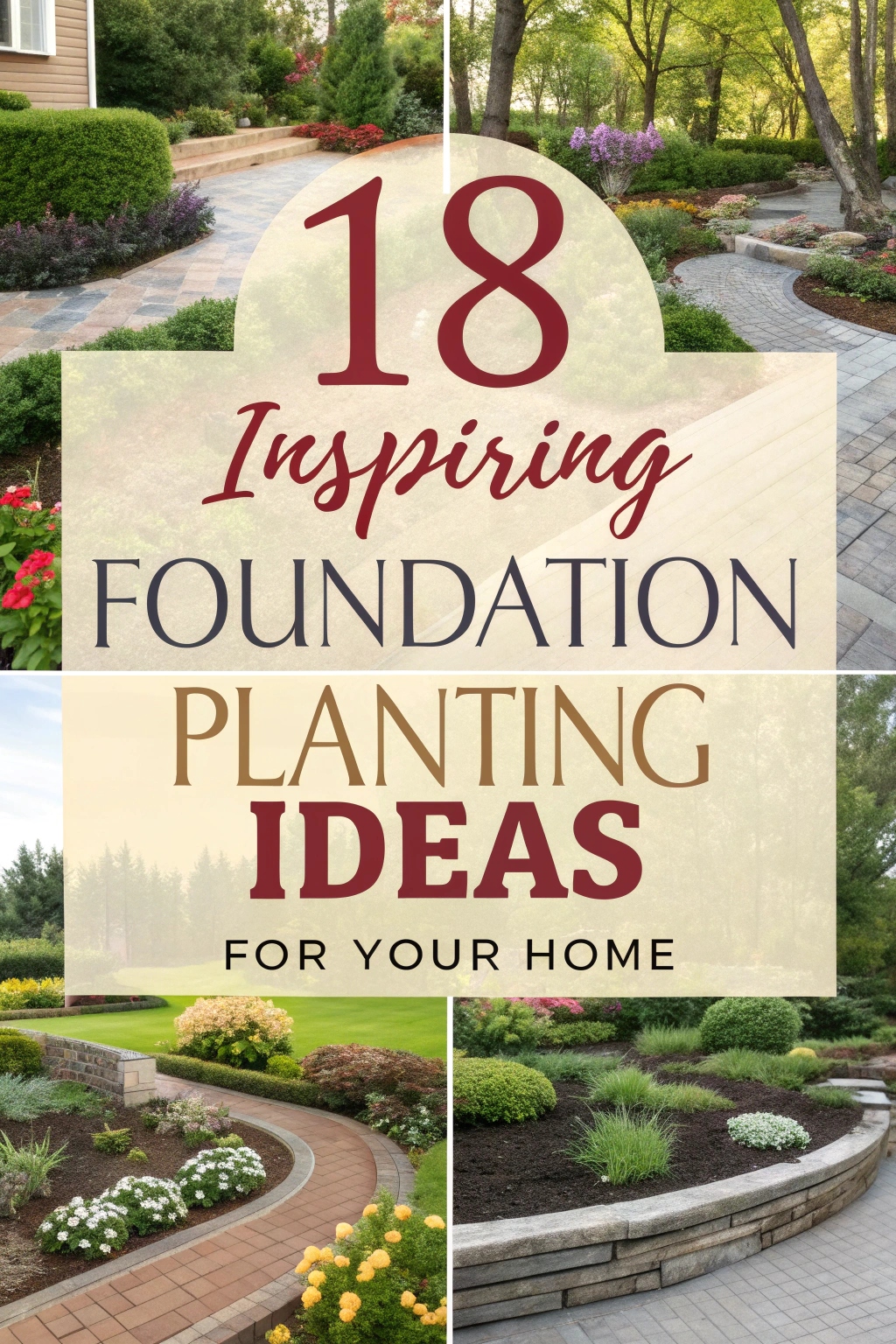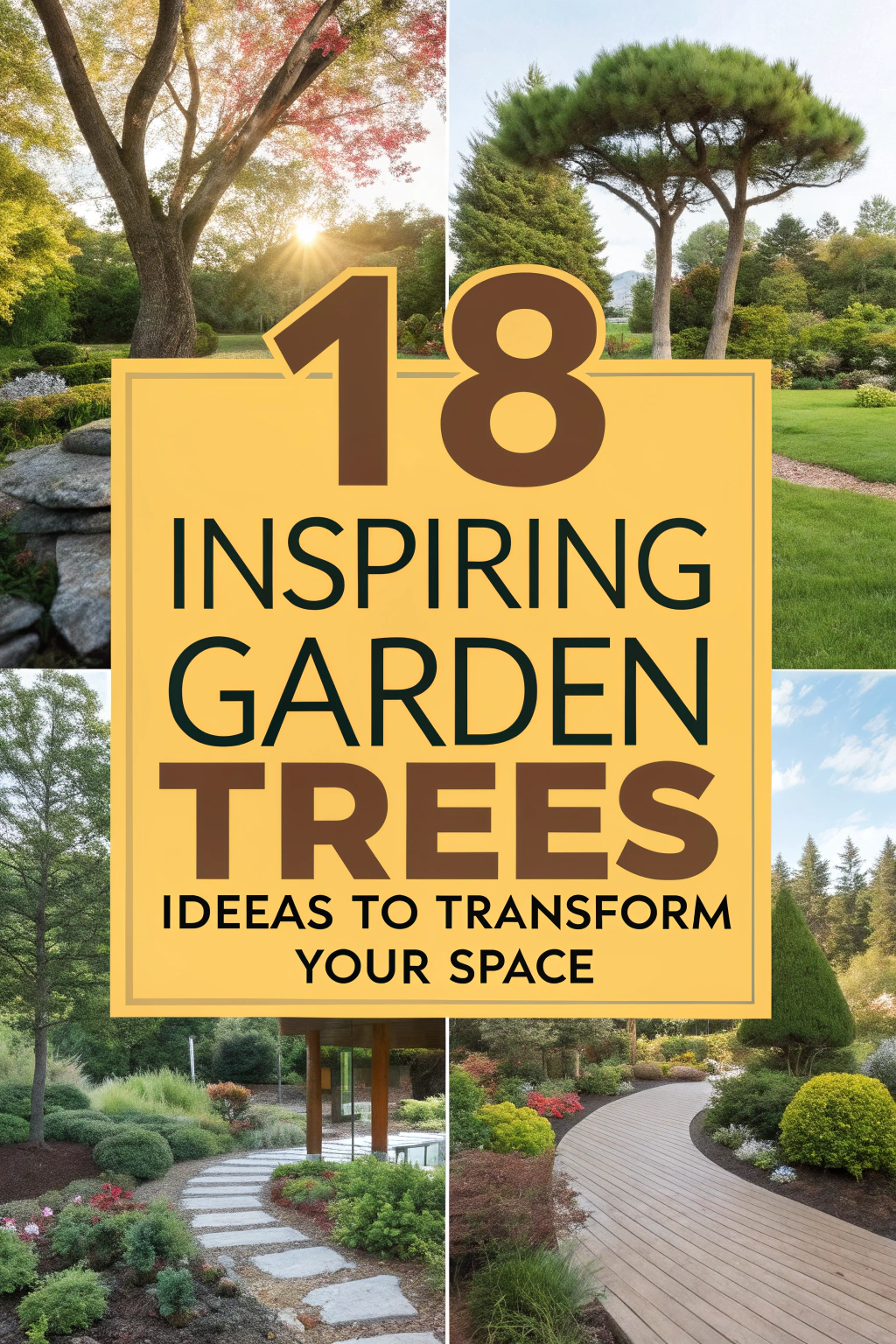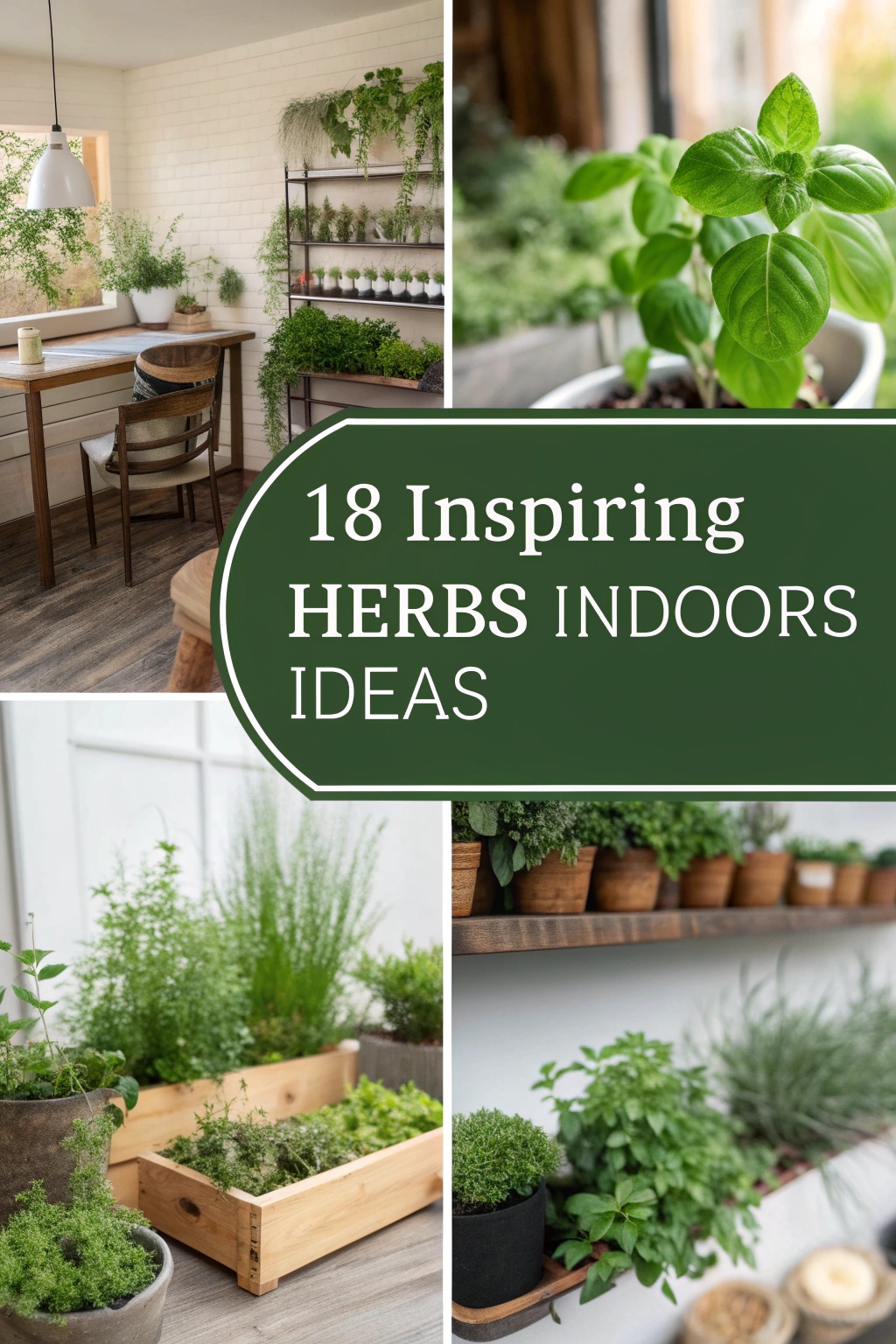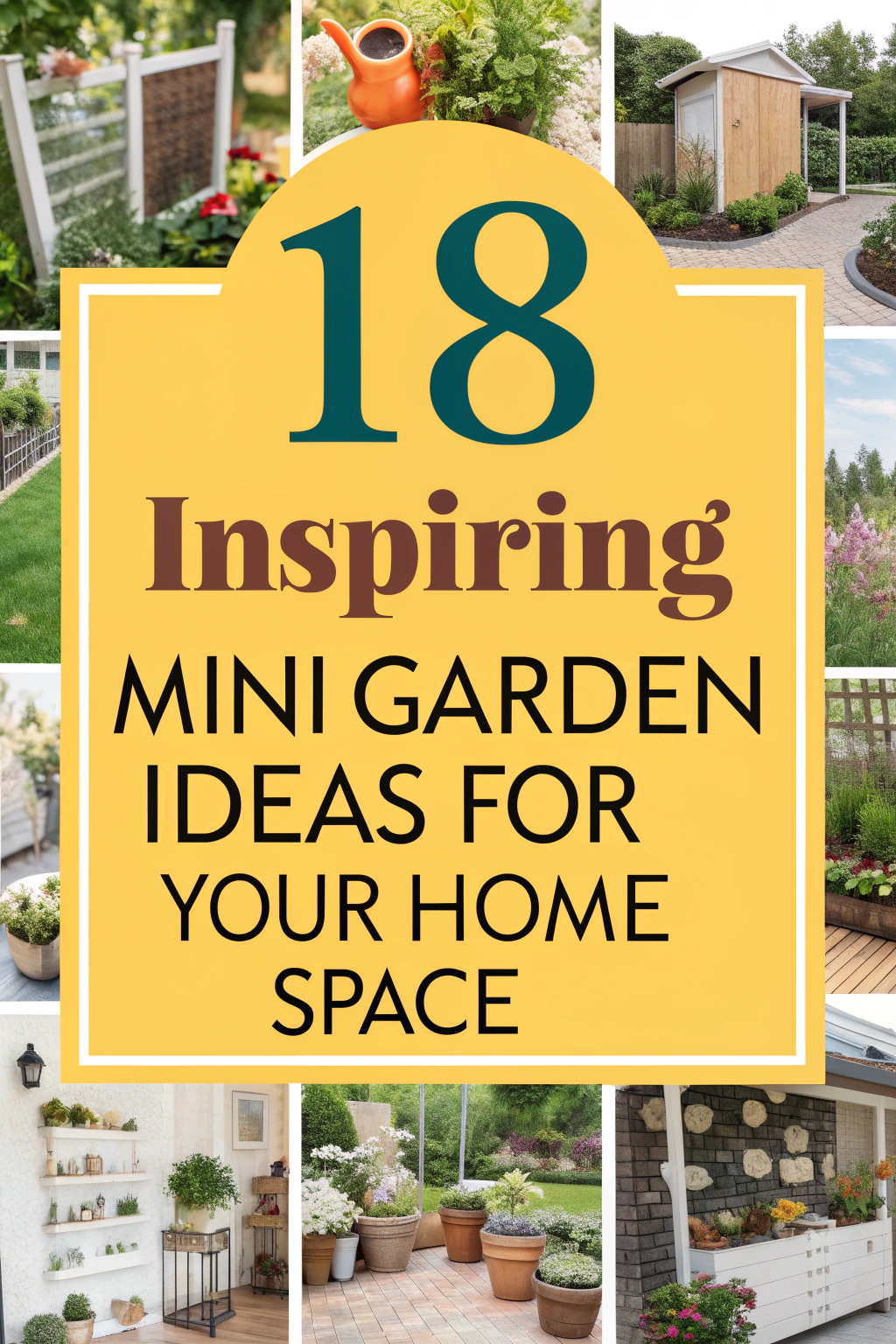16 Inspiring Ideas for Your Home Vegetable Garden
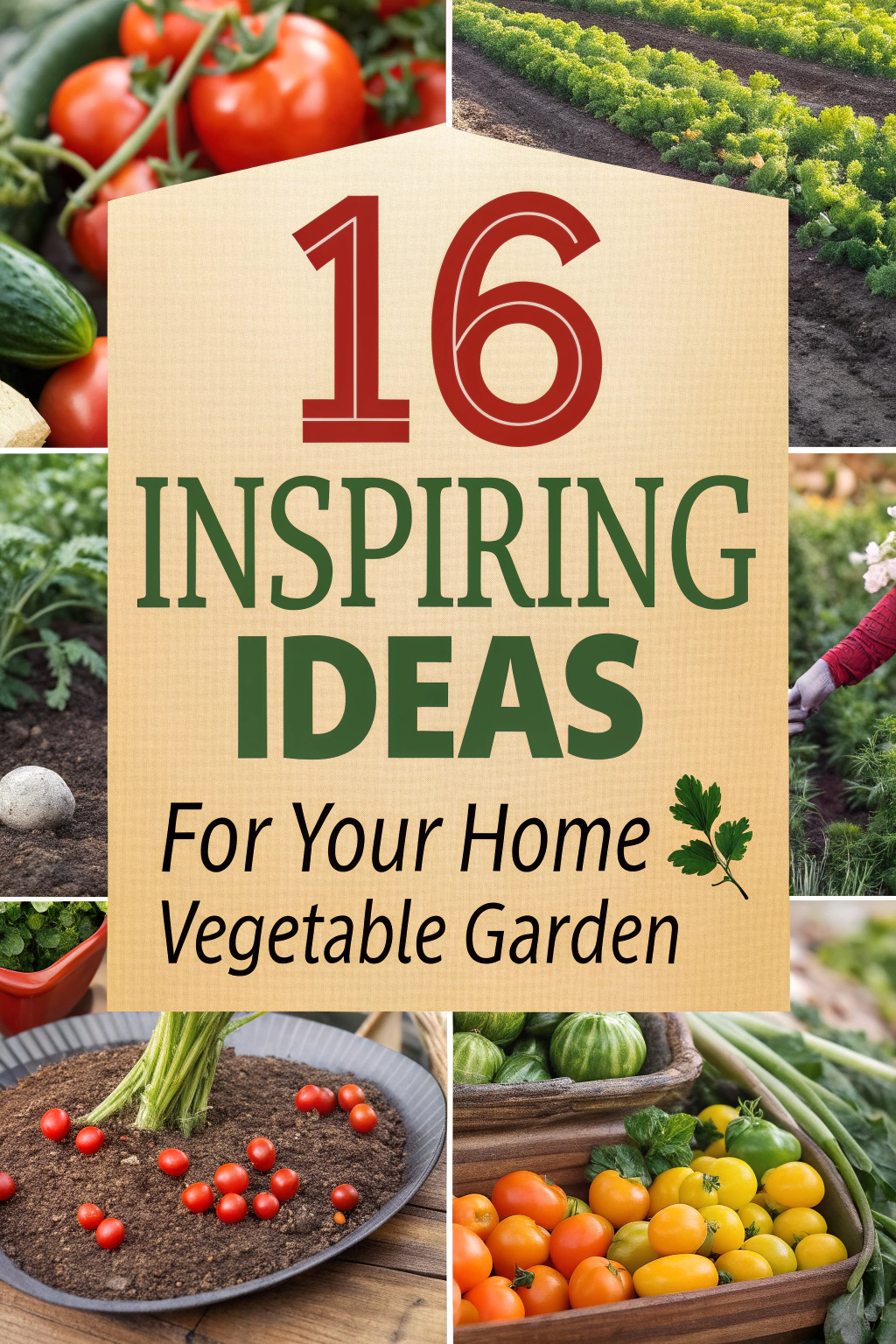
Creating a home vegetable garden can transform your outdoor space into a fruitful haven. Start by carefully planning your layout and choosing the right location for maximum sunlight. Incorporating raised beds and exploring vertical gardening techniques can enhance your yields considerably. As you embrace these strategies, you’ll discover various methods to make the most of your space and resources. So, why not explore these 16 inspiring ideas to cultivate a thriving garden that reflects your vision?
Start With a Plan: Designing Your Garden Layout
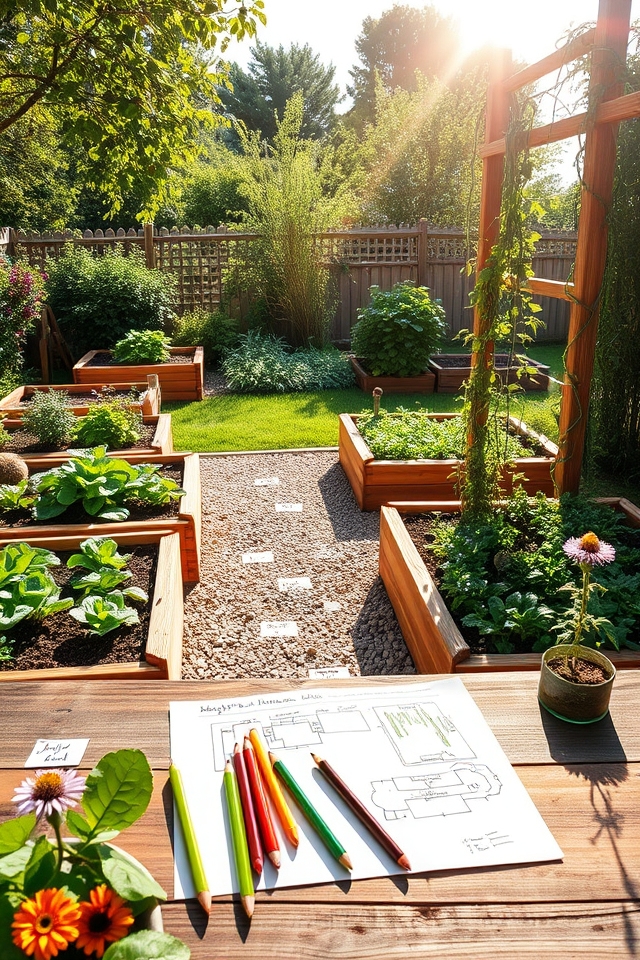
When designing your vegetable garden layout, start with a clear plan that considers factors like sunlight, soil quality, and accessibility. Begin by sketching your space to determine where to place raised beds, rows, or containers. Consider companion planting to maximize space and deter pests. Leave pathways between plants for easy maintenance and harvesting. Remember to account for the size and growth habits of your chosen vegetables to guarantee a productive and visually appealing garden.
Choose the Right Location for Sunlight
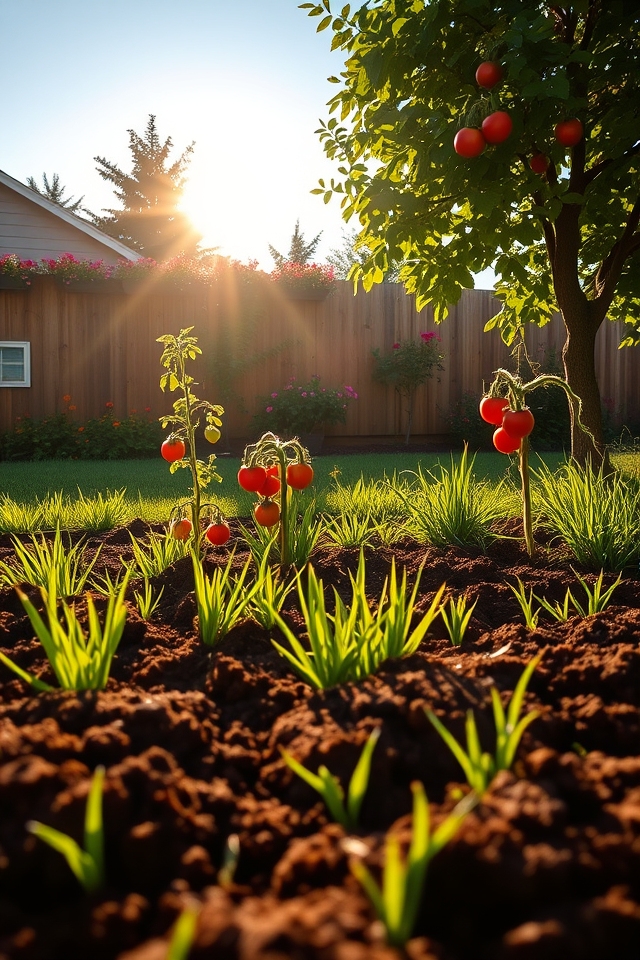
Choosing the right location for your vegetable garden is essential for maximizing sunlight exposure. Most vegetables require at least 6 to 8 hours of direct sunlight each day to thrive. Look for a spot in your yard that remains sunny throughout the day, avoiding areas shaded by trees, buildings, or fences. Observing your space at different times can help you determine the best location, ensuring your plants receive the light they need for healthy growth and productivity.
Opt for Raised Garden Beds
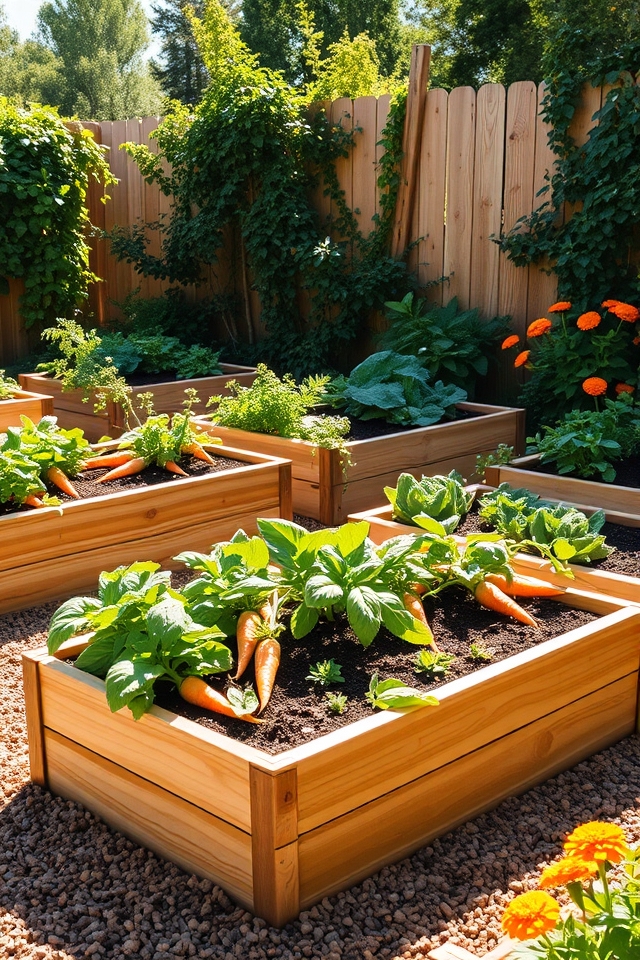
Raised garden beds are an excellent option for home vegetable gardening, offering numerous benefits. They provide better drainage, improved soil quality, and easier access for planting and harvesting. By elevating the garden, you can reduce the likelihood of soil compaction and minimize weed growth. Additionally, raised beds can be tailored to your desired dimensions and materials, allowing for personalized designs that complement your outdoor space while maximizing sunlight exposure for your vegetables.
Embrace Vertical Gardening Techniques
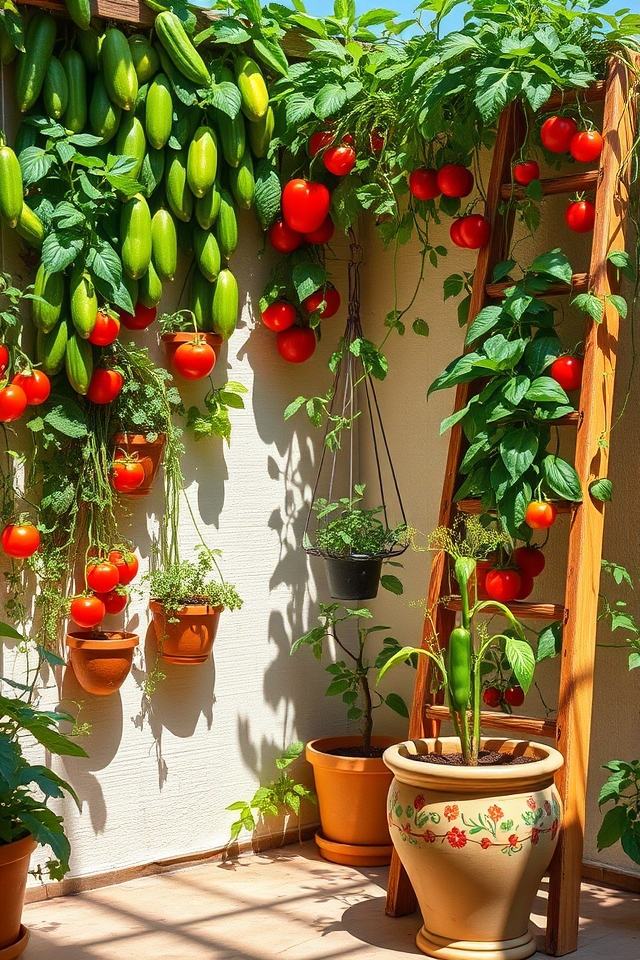
Embracing vertical gardening techniques can transform your home vegetable garden, making it more space-efficient and visually appealing. By utilizing trellises, wall planters, and hanging pots, you can grow a variety of vegetables such as cucumbers, tomatoes, and beans upward instead of outward. This approach not only maximizes your gardening area but also enhances air circulation and light exposure for the plants, promoting healthier growth. Plus, vertical gardens can be a stunning focal point in any outdoor space!
Implement Container Gardening for Small Spaces
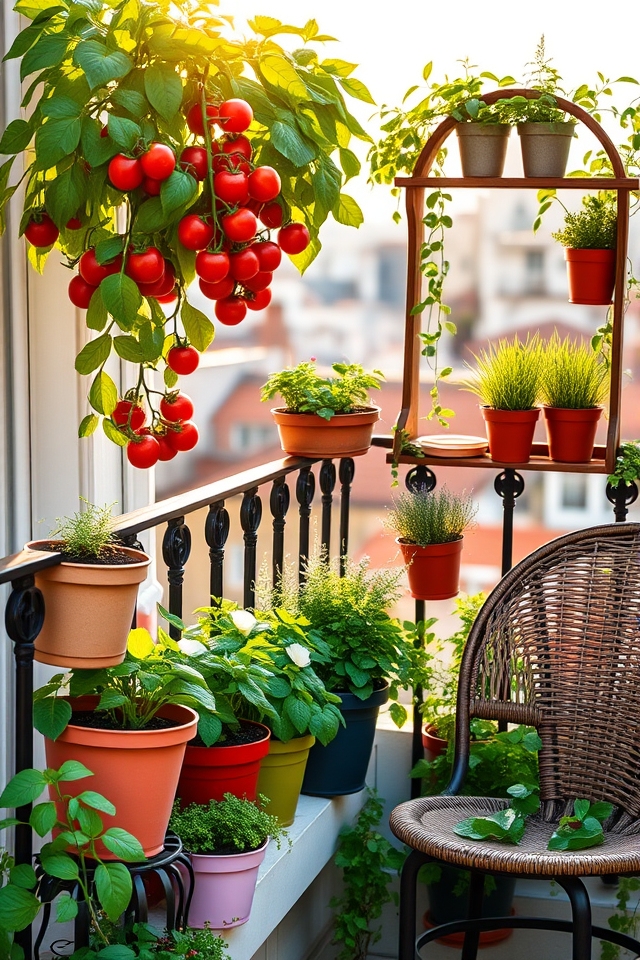
Container gardening is an excellent solution for cultivating a vegetable garden in small spaces, such as balconies, patios, or even small backyards. Utilizing pots, raised beds, or hanging planters allows you to grow a variety of vegetables, from tomatoes to herbs, without the need for extensive ground space. Choose lightweight containers and guarantee proper drainage. This method not only maximizes your growing potential but also adds aesthetic value to your outdoor area.
Explore Hydroponic Gardening Options
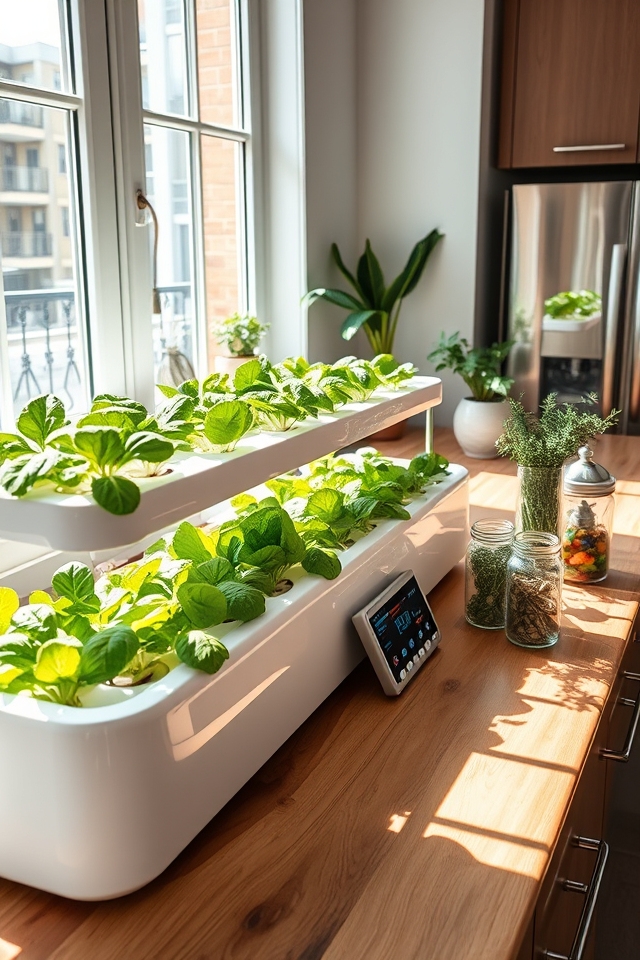
Hydroponic gardening is an innovative method that allows you to grow vegetables without soil, using nutrient-rich water instead. This space-efficient technique is ideal for home gardens, enabling year-round cultivation and faster plant growth. Hydroponic systems range from simple DIY setups to advanced automated ones, making it accessible for beginners and seasoned gardeners alike. With options like NFT (Nutrient Film Technique) and Deep Water Culture, you can enjoy fresh produce while maximizing your indoor or outdoor space.
Use Companion Planting for Pest Control
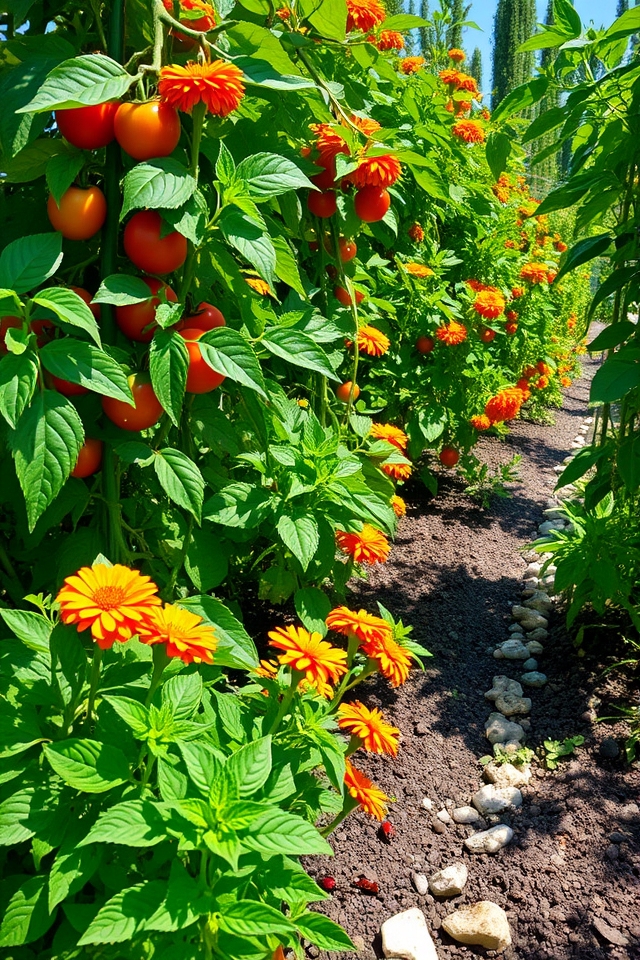
Companion planting is an effective strategy for pest control in home vegetable gardens. By cultivating specific plants together, gardeners can naturally deter pests and promote a healthier ecosystem. For instance, planting marigolds alongside tomatoes can repel nematodes, while basil can ward off aphids and flies. This technique not only enhances growth and yield but also reduces the need for chemical pesticides, making gardens more sustainable and environmentally friendly.
Incorporate Herbs Into Your Vegetable Garden
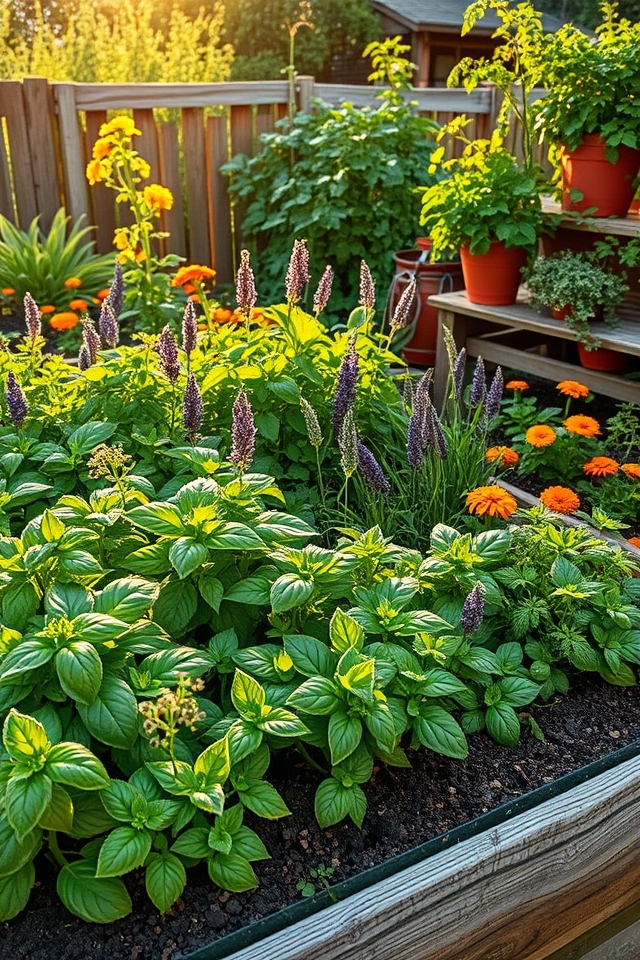
Incorporating herbs into your vegetable garden not only enhances flavors but also attracts beneficial insects and improves biodiversity. Choose herbs like basil, parsley, and cilantro, which complement a variety of vegetables. Plant them in designated sections or intersperse them among your crops to maximize space and create a visually appealing garden. Regularly harvesting your herbs encourages growth and adds a fragrant touch to your gardening experience.
Create a Pollinator-Friendly Environment
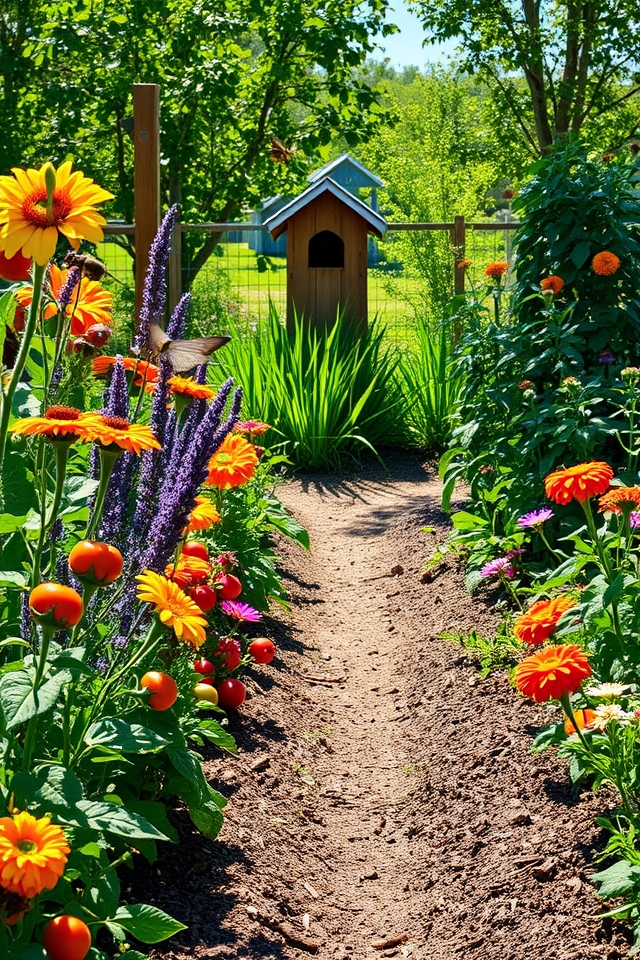
Creating a pollinator-friendly environment in your home vegetable garden is essential for promoting biodiversity and ensuring healthy plant growth. Incorporate a variety of flowering plants that bloom at different times to attract bees, butterflies, and other pollinators. Avoid using pesticides, and provide nesting sites by leaving some areas of bare soil or undisturbed brush. Incorporating native plants also supports local wildlife and boosts the overall health of your garden ecosystem.
Practice Crop Rotation for Soil Health

Practicing crop rotation is essential for maintaining soil health in a vegetable garden. By alternating the types of crops planted in a specific area each season, you can prevent nutrient depletion, reduce pest buildup, and minimize the risk of soil-borne diseases. For example, following heavy-feeding crops like tomatoes with legumes enriches the soil with nitrogen. This sustainable practice not only enhances yield but also fosters a balanced ecosystem within your garden.
Utilize Mulching to Retain Moisture
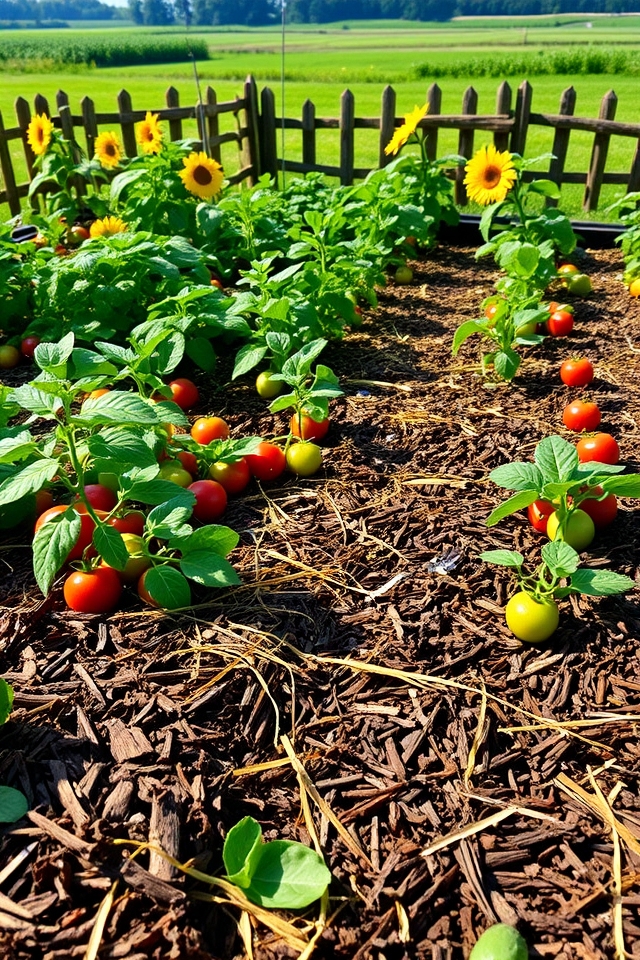
Mulching is an essential technique in home vegetable gardening that helps retain soil moisture, suppress weeds, and regulate soil temperature. By applying a layer of organic materials, such as straw, wood chips, or shredded leaves, around your plants, you create a barrier that reduces evaporation and keeps the soil consistently moist. This not only enhances the health of your vegetables but also minimizes the frequency of watering, making your garden more sustainable and easier to maintain.
Build a Compost Bin for Nutrient-Rich Soil
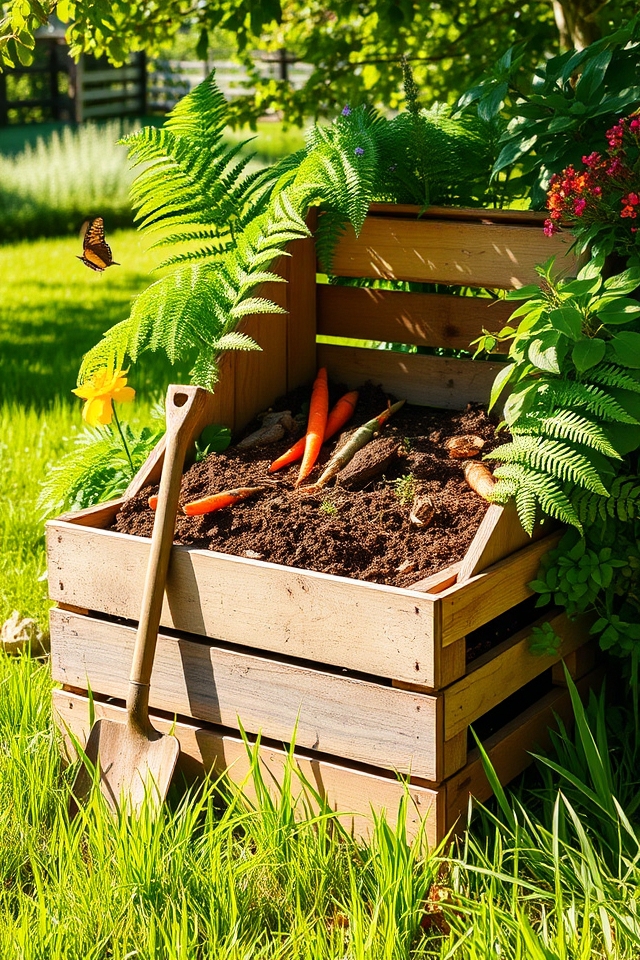
Building a compost bin is a great way to create nutrient-rich soil for your home vegetable garden. A compost bin can be made using wooden pallets, wire mesh, or even repurposed containers. Start by layering green materials like vegetable scraps and grass clippings with brown materials such as dried leaves and cardboard. Turn the compost regularly to aerate it and speed up decomposition. Over time, you’ll have rich organic matter that enhances soil fertility and structure for healthier plants.
Install a Drip Irrigation System
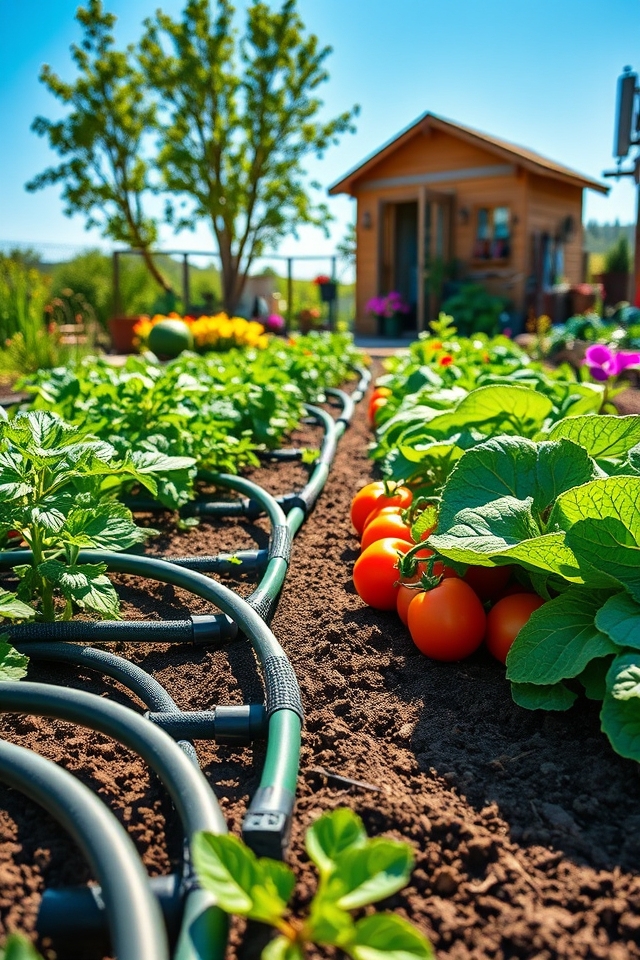
Installing a drip irrigation system in your home vegetable garden is an efficient way to guarantee your plants receive consistent moisture without wasting water. This system delivers water directly to the root zone of each plant, minimizing evaporation and runoff. Plus, it reduces the need for manual watering, allowing you to focus more on gardening rather than maintenance. With a few simple components, you can set up a customized system tailored to your garden’s specific needs.
Experiment With Succession Planting
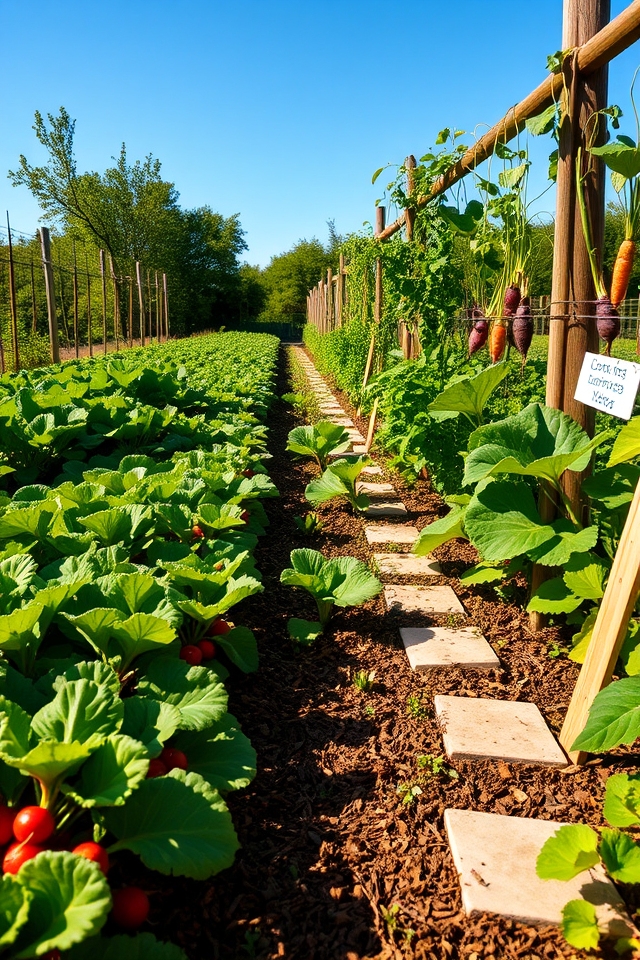
Succession planting is a fantastic way to maximize your vegetable garden’s productivity throughout the growing season. By staggered sowing of seeds or transplanting seedlings at intervals, you can guarantee a continuous harvest of fresh produce. For example, plant quick-growing crops like lettuce or radishes every couple of weeks for a steady supply. This method not only enhances yield but also keeps your garden fresh and vibrant, reducing the gaps between harvests and minimizing waste.
Grow Vegetables Indoors With Grow Lights
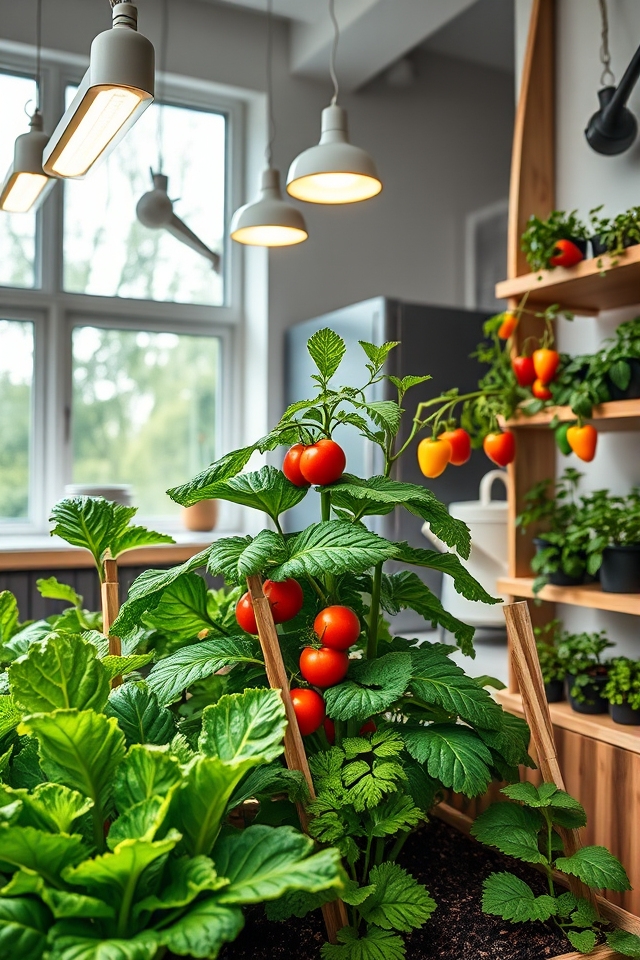
Growing vegetables indoors with grow lights is an excellent way to enjoy fresh produce year-round, regardless of outdoor conditions. By using specialized LED or fluorescent grow lights, you can provide the necessary light spectrum for photosynthesis, mimicking natural sunlight. This method allows you to cultivate a variety of vegetables, such as tomatoes, peppers, and leafy greens, in small spaces. Position the lights effectively and adjust the duration of exposure to guarantee healthy, vibrant plants even indoors.
Keep a Gardening Journal for Progress Tracking
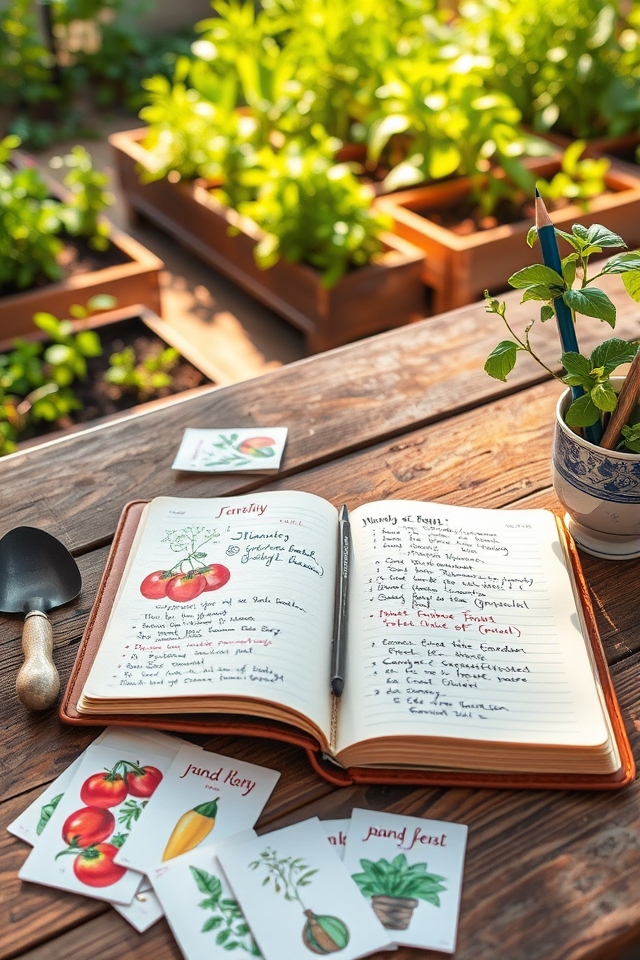
Keeping a gardening journal is an invaluable practice for any home vegetable gardener. Documenting your planting dates, seed varieties, growth progress, and weather conditions allows you to track the performance of your garden over time. It also helps in identifying successful crops and understanding what changes may be necessary for future seasons. Additionally, your journal can include notes on pest issues and harvesting dates, ensuring a smarter and more productive gardening experience year after year.
